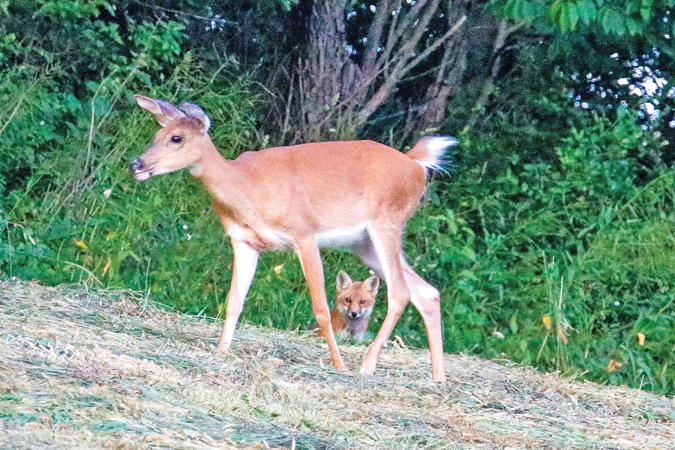A few weeks back, I wrote a piece about some of the wild critters that walk, crawl, and slither through my backyard. Such sightings are not at all unusual, especially for those of us who live in the country surrounded by fields, hedgerows, and forests. Of course, Deer are frequent visitors, but bears, turkeys, coyotes, fishers, and even bobcats are all spotted from time to time. While rabbits and squirrels are common in urban areas, most of the other wildlife tend to keep their distance from population centers, but even some of them will make an appearance once in a while.
It’s not at all unusual for coyotes to show up in urban areas in many parts of the western and central United States; in fact, it has happened in other parts of the country as well. When it comes to bears showing up in urban areas, Pennsylvania doesn’t have to take a back seat to any other part of the country. It wasn’t that long ago that I wrote about a bear that had climbed a tree next to the Muncy Hospital parking lot and only a few yards from Route 180; it was quite an attraction until it was successfully removed and released elsewhere. The bear pictured on the cover was found in Memorial Park in Williamsport and was sedated and relocated. Although it’s a very rare situation, you should remember too that it wasn’t long ago that a Muncy area woman was attacked and severely mauled by a black bear; thankfully, she recovered.
Recently reports are coming in that more and more red foxes are being sighted in and around urban areas. A bit more concerning is the fact that a Lycoming County woman was even attacked by a red fox that apparently was rabid. So why do there seem to be more foxes showing up in more populated areas? Part of the answer may lie in what a fox likes to eat. When it comes to eating, foxes are considered “opportunists,” that is, they will eat whatever is easiest to catch. Foxes feed on mice, rats, woodchucks, opossums, porcupines, game birds, songbirds, bird eggs, insects, fruits, and grasses, but they also seek out chickens, rabbits, squirrels, and even the local kitty cat. Obviously, many of those food items can be found in urban areas, and they are often “easy pickings.”
Red foxes seem to be less afraid of people than gray foxes, and they have been known to den fairly close to human activity. Recently, I observed an adult red fox and two of her young ones frolicking at the edge of the woods along Route 180 and only a short distance from a major car dealership. Just last week, a red fox bolted across the road in front of me as I was leaving a busy boat launch at Rose Valley Lake.
Fox populations are affected by the availability of food, changes in suitable habitat, and pressure from man. Food and suitable habitat are often found around urban areas, but pressure from man is seldom a deterrent. Due to the big drop in fur prices because of the lack of demand, there has also been a drop in hunting and trapping of foxes, and man is basically the only real predator of foxes, so it’s no surprise that their numbers seem to be increasing. It’s also true that urban areas have expanded into wild critters’ habitat, so it’s no surprise that potential conflicts arise.
In the meantime, to cut down on conflicts, you may want to try to avoid leaving food scraps in the garbage can outside the house overnight; bears, raccoons, and other wild animals love a meal that takes little effort. Come deer season; it would be wise to dispose of deer hunting scraps in a manner that won’t attract unwanted visitors. Don’t put food out for wild animals except for bird feeders, and if you suspect bears are in the neighborhood, you may want to take them down for a while. You should also avoid any wild animals that are being “friendly”; that’s not normal for wild animals, and it could be a sign of illness or rabies. Contact the Game Commission is you suspect a rabid animal, and before attempting to trap or catch any animal intruders, you should check with the commission to make sure your efforts are legal.
Certainly, habitat loss, naturally occurring food shortages, and other natural occurrences can limit animal populations; but hunting and trapping are also important controlling factors. Needless to say, I’m a big supporter of hunting and trapping; I enjoy taking part in the activity, and there’s no doubt that hunting and trapping are sometimes the only control and deterrent we have. Pennsylvania’s bear population is well over 15,000 bears, and it’s a good thing we take a few thousand or more every year. Hopefully, hunting and trapping will remain at high enough levels to keep bears, coyotes, foxes, raccoons, and other wild creatures at reasonable levels-even in urban areas.





Leave a Comment
Your email address will not be published. Required fields are marked with *